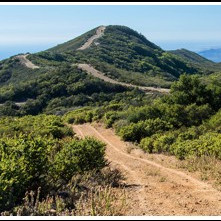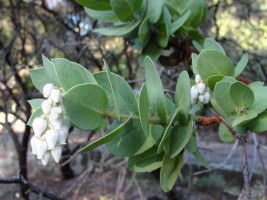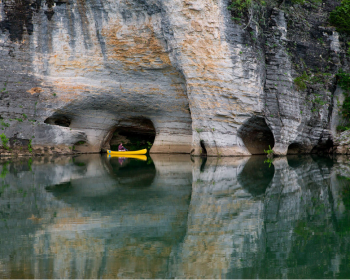Forest Service Withdraws Controversial Vegetation Clearance Project in California
Open gallery

In response to a lawsuit filed by Earthrise on behalf of the California Chaparral Institute and Los Padres ForestWatch, the U.S. Forest Service has withdrawn a harmful fuel break project that would have damaged fragile habitat and threatened rare species in Los Padres National Forest along California’s Central Coast. On Monday, the conservation groups agreed to drop their pending legal action against the project, which they filed last December in U.S. District Court.
“We appreciate the Forest Service’s decision to reconsider this project,” said ForestWatch executive director Jeff Kuyper. “We stand ready to assist forest officials in identifying and implementing proven, cost-effective, and environmentally sustainable ways to directly protect homes from wildfire.”
The Gaviota Fuel Break would have clear-cut native chaparral habitat across a six-mile-long, 300-foot-wide swath (the length of a football field) between Refugio Pass and Gaviota Peak, along the crest of the Santa Ynez Mountains in the Los Padres National Forest. The site – located far away from any structures – lies at the heart of the Gaviota Coast, one of the crown jewels of Santa Barbara County.
The key species at risk is the beautiful Refugio manzanita (Arctostaphylos refugioensis). Considered endangered by the California Native Plant Society, this classic icon of the chaparral only grows in a narrow ridgeline band between Point Conception and Santa Ynez Peak along the coast of Santa Barbara County – exactly where the Gaviota Fuel Break was scheduled to run.
By filing the lawsuit the groups hoped to protect Refugio manzanitas and other rare plants and animals in the path of the fuel break. The suit was also aimed at encouraging forest officials to focus their limited resources on reducing fire risk directly in and around communities.
The vast majority of fire ecologists agree that the best way to protect communities from wildfire is to create defensible space immediately around homes, and to retrofit structures with ignition-resistant building materials like fire-rated roofs, dual-paned glass, and screening. Clearing vegetation in remote areas, far away from structures, is a costly and often ineffective way to stop wildfires and protect homes.
“We are extremely grateful the Los Padres National Forest reconsidered this project,” said Richard Halsey, Director of the California Chaparral Institute. “We’re hopeful this decision signals greater agency collaboration with the both fire scientists and conservationists so we can work together to jointly develop effective plans to reduce fire risk to protect people and nature.”
Earthrise staff attorney Nina Robertson, stationed in San Francisco, and managing attorney and Lewis & Clark professor, Tom Buchele, represented the conservation groups. This is one of many cases that Earthrise hopes to bring on behalf of its California clients to protect the state’s unique ecosystems and natural lands.
Earthrise Law Center is located in Wood Hall on the Law Campus.
MSC: 51
email earthrise@lclark.edu
voice (503) 768-6736
fax (503) 768-6642
Allison LaPlante
Earthrise Law Center
Lewis & Clark Law School
10101 S. Terwilliger Boulevard MSC 51
Portland OR 97219


